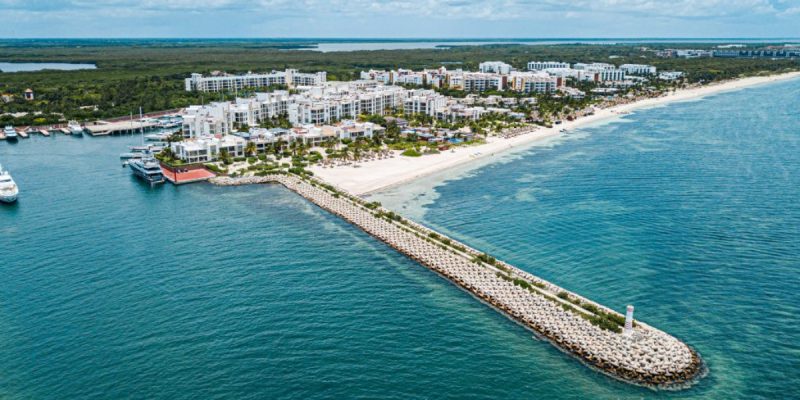The sargassum arrival monitoring by the Mexican Navy Secretariat (Semar) confirms even lower levels of seaweed influx in the coming weeks on the Caribbean coast.
According to the forecast prepared by the Gulf and Caribbean Sea Oceanographic Institute, the trend is decreasing because only four patches (three of 10 tons and one of 12 tons) have been detected in the central Quintana Roo coastline.
This scenario, according to data from the armed institute, reinforces predictions of low sargassum arrival for this season, as it transitioned from alert level 4, “moderate,” to level 2, “very low,” in less than a month.
The latest report provided by Semar, compared to the one issued a month ago, showed that in August, there were 10 sargassum patches with predicted quantities of up to 20 tons, from the southern tip of the Sian Ka’an Biosphere Reserve to Cancun.
Now, there are only four detected patches, and they are located only in front of the aforementioned protected natural area.
Thus, the main beaches in tourist destinations such as Cancun and the Riviera Maya are sargassum-free. Cozumel, Isla Mujeres, and Puerto Morelos, which typically had abundant sargassum in recent years at this time, are also experiencing a decline.
“The alert level for the Mexican Caribbean Region is in category ‘2,’ which corresponds to ‘very low,’ according to the Scale for the Approximate Presence of Sargassum in the Mexican Caribbean,” Semar stated.
In this context, according to official figures, as of 2023, 112,363 tons of organic matter have been collected, while in all of 2022, 287,405 tons were collected on the Caribbean coast of Quintana Roo.
This reflects a drastic 60% decrease in the amount of sargassum that has reached the region in 2023 compared to the previous year. The reduction in influx is also significant compared to the past five years.
All of this is evident in sargassum-free beaches. Additionally, the seawater has been regaining its turquoise blue color after being darkened for years.
TYT Newsroom



